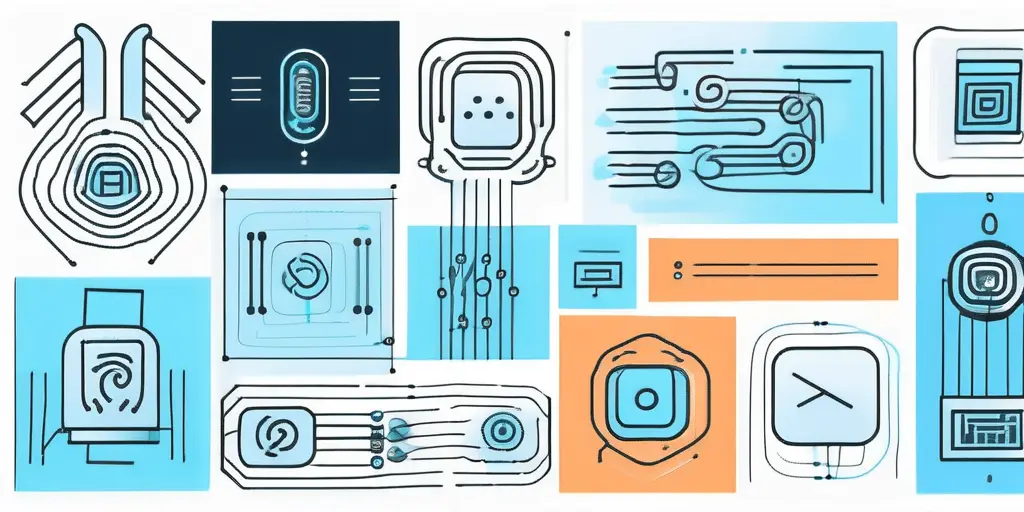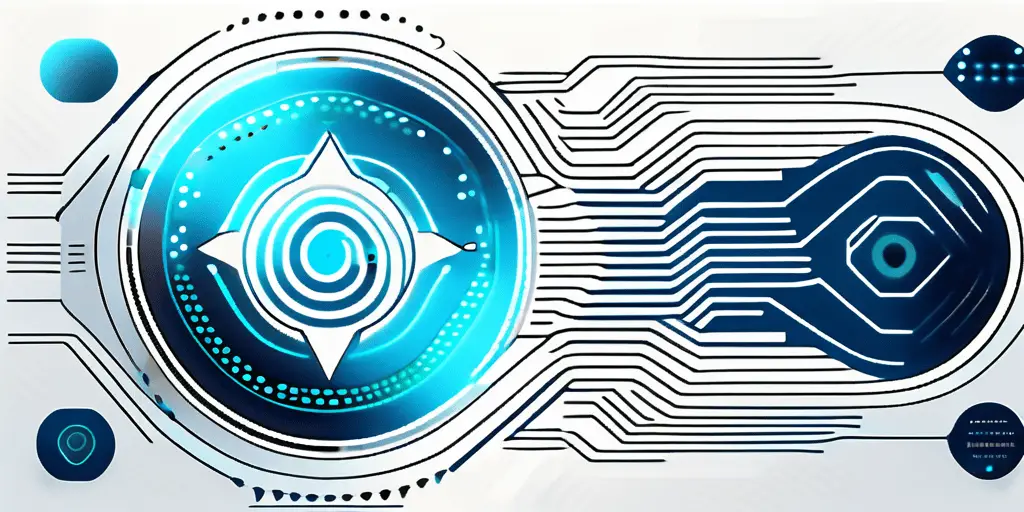With cyber threats becoming increasingly sophisticated, it is crucial to have robust measures in place to protect our data from being tampered with or falsified. One such measure is the use of Message Authentication Codes (MACs), which play a vital role in cybersecurity.
Understanding the Basics of Cybersecurity
Before diving into the world of Message Authentication Codes, let’s take a moment to understand the basics of cybersecurity. In simple terms, cybersecurity refers to the practice of safeguarding computers, servers, and networks from unauthorized access, malicious attacks, and data breaches. It encompasses a wide range of techniques and technologies designed to protect our digital assets and ensure our information’s confidentiality, integrity, and availability.
Regarding cybersecurity, it’s important to recognize that our threats constantly evolve. Hackers and cybercriminals are always finding new ways to exploit vulnerabilities and gain unauthorized access to sensitive data. This is why staying up-to-date with the latest security practices and technologies is crucial in maintaining a strong defense against potential attacks.
The Importance of Cybersecurity
Cybersecurity is not a luxury but a necessity in today’s interconnected world. With the proliferation of connected devices and the ever-increasing amount of data being generated, the potential risks and consequences of cyber attacks are greater than ever. From financial loss to reputational damage, the impact of a successful cyber attack can be devastating. Implementing robust cybersecurity measures, such as Message Authentication Codes, is essential to safeguard our digital lives.
Moreover, cybersecurity is not just a concern for large organizations or government agencies. It is equally important for individuals and small businesses. Individuals often underestimate the value of their personal information, such as social media accounts, email addresses, and financial details. However, this seemingly insignificant information can be valuable to cybercriminals who can exploit them for various fraudulent activities.
Key Terms in Cybersecurity
Before we delve deeper into Message Authentication Codes, let’s familiarize ourselves with some key terms in cybersecurity. These terms will help us better understand the concepts and principles underlying the technologies we will be exploring. Familiarizing ourselves with these terms, from encryption to malware, will empower us to make informed decisions regarding protecting our data and digital assets.
Encryption, for example, is a fundamental concept in cybersecurity. It involves converting plain text or data into an unreadable format, known as ciphertext, to prevent unauthorized access. Encryption techniques can securely transmit and store sensitive information, ensuring that even if intercepted, it remains unintelligible to unauthorized individuals.
Another important term is malware, which refers to malicious software designed to disrupt, damage, or gain unauthorized access to computer systems. Malware can take various forms, including viruses, worms, Trojans, and ransomware. Understanding the different types of malware and how they operate is crucial in identifying and mitigating potential threats.
Introduction to Message Authentication Codes
Now that we have a solid foundation in cybersecurity let’s explore the fascinating world of Message Authentication Codes. Put simply, a Message Authentication Code is a cryptographic tool used to verify the integrity and authenticity of a message or data. By appending a MAC to a message, we can ensure that it has not been tampered with during transmission and originates from a trusted source.
Message Authentication Codes (MACs) are widely used in various security protocols and applications to provide data integrity and authenticity. They are essential in scenarios where ensuring the trustworthiness of transmitted data is critical, such as in online banking transactions, secure communication channels, and software updates. The adoption of MACs has significantly enhanced the security of digital communication and data exchange.
The Role of Message Authentication Codes
Message Authentication Codes play a crucial role in ensuring the integrity and authenticity of data. They provide a means for both the sender and the receiver to verify that the data has not been altered in transit. By including a MAC with the message, we can detect any modifications, intentional or accidental, that may have occurred during transmission. Thus, Message Authentication Codes serve as a reliable mechanism for detecting data tampering.
Message Authentication Codes are instrumental in preventing various types of cyber attacks, such as man-in-the-middle attacks and data manipulation. By validating the integrity of the received data through the MAC verification process, organizations can mitigate the risks associated with unauthorized alterations and ensure the confidentiality of sensitive information.
How Message Authentication Codes Work
At its core, a Message Authentication Code involves using an algorithm that takes in a secret key and the data being protected. This algorithm produces a unique hash value, which serves as the MAC. The sender and receiver possess the secret key, allowing them to generate and verify the MAC. Data tampering can be detected with high assurance by comparing the MAC computed by the receiver with the MAC appended to the message by the sender.
It is important to note that the strength of a Message Authentication Code lies in the secrecy and complexity of the key used in the generation process. Using a strong and securely managed key is paramount to the effectiveness of the MAC in safeguarding the integrity of the transmitted data. Additionally, advancements in cryptographic techniques have led to the development of more robust MAC algorithms, further enhancing the security posture of modern communication systems.
Different Types of Message Authentication Codes
Message Authentication Codes (MACs) play a crucial role in ensuring the integrity and authenticity of data in various communication systems. There are several types of MACs, each offering unique features and capabilities to address different security requirements. In this discussion, we will delve deeper into two popular types of MACs: Hash-Based Message Authentication Codes (HMACs) and Time-Based Message Authentication Codes (T-MACs).

Hash-Based Message Authentication Codes
Hash-Based Message Authentication Codes, commonly referred to as HMACs, are a widely adopted method for generating MACs using cryptographic hash functions. These functions take the input data and a secret key, processing them to produce a fixed-length hash value. The resulting hash value serves as the MAC, providing a secure and efficient means of verifying data integrity. HMACs are known for their robustness and performance, making them a preferred choice in various security protocols and applications.
One of the key advantages of HMACs is their resistance to various cryptographic attacks, such as collision and preimage attacks. The iterative nature of the hash function used in HMACs enhances the security of the generated MAC, making it computationally infeasible for an attacker to forge or manipulate the authentication code without possessing the secret key.
Time-Based Message Authentication Codes
Time-Based Message Authentication Codes, known as T-MACs, introduce a time-dependent element into the MAC computation process to enhance security measures. By incorporating timestamps or time-dependent factors during the MAC generation, T-MACs offer protection against replay attacks and unauthorized data manipulation. This temporal aspect is particularly valuable in applications where data freshness and timeliness are critical, such as financial transactions, network communication, and real-time monitoring systems.
T-MACs can be implemented using synchronized clocks or timestamp mechanisms to ensure the accuracy and consistency of time-based information across different entities in a communication network. This synchronization helps prevent discrepancies in the validation of MACs and ensures reliable data integrity verification based on the temporal context.
The Application of Message Authentication Codes in Cybersecurity
Now that we understand the basics of Message Authentication Codes and the different types available, let’s explore how they are applied in different aspects of cybersecurity.
Protecting Data Integrity
Data integrity is of utmost importance in cybersecurity. By using Message Authentication Codes, we can verify that the data has not been tampered with during transmission. This is particularly crucial when transmitting sensitive information such as passwords, financial transactions, or critical system updates. By ensuring data integrity, Message Authentication Codes provide a strong defense against unauthorized modifications.
One key advantage of Message Authentication Codes in protecting data integrity is their ability to detect even the smallest changes in the transmitted data. If a single bit is altered, the MAC verification process will fail, alerting the recipient to a potential security breach. This level of granularity in detecting alterations ensures that the data remains secure and unaltered throughout its journey.
Ensuring Data Authenticity
Authenticity is another essential aspect of cybersecurity. It allows us to verify that the data received is from the expected sender and has not been spoofed or altered. Message Authentication Codes ensure data authenticity by allowing the receiver to validate the MAC appended to the message. This ensures that the data originates from a trusted source, giving us confidence in its integrity and authenticity.
Message Authentication Codes can also help establish a secure communication channel between entities. By exchanging keys securely and using MACs to authenticate messages, parties can ensure that the communication is authentic and confidential. This additional layer of security adds a robust defense mechanism against various cyber threats, making it harder for malicious actors to intercept or manipulate the transmitted data.
The Strengths and Weaknesses of Message Authentication Codes
While Message Authentication Codes are a powerful tool in cybersecurity, it is essential to be aware of their strengths and weaknesses.

Message Authentication Codes (MACs) ensure data integrity and authenticity in various security protocols. They are widely used in secure messaging, digital signatures, and network communication applications. MACs provide a layer of protection by verifying the integrity of transmitted data, making them a fundamental component of secure communication systems.
Advantages of Using Message Authentication Codes
One of the significant advantages of using Message Authentication Codes is their ability to provide high data integrity and authenticity. By appending a MAC to a message, we can detect any modifications or forgeries that may have occurred during transmission. This allows us to trust the data we receive and make informed decisions. Message Authentication Codes are computationally efficient and can be implemented using various cryptographic algorithms.
Another advantage of Message Authentication Codes is their application versatility. They can be tailored to specific security requirements, offering flexibility in implementation. MACs can be designed to support different key lengths, cryptographic hash functions, and modes of operation, allowing organizations to customize their security measures based on their unique needs.
Potential Drawbacks and Limitations
While Message Authentication Codes offer significant benefits, they are not without their limitations. One potential drawback is the reliance on a shared secret key. Both the sender and the receiver must possess the same key to generate and verify the MAC. This presents a challenge in scenarios where secure key distribution is not feasible. Message Authentication Codes do not protect against other types of attacks, such as eavesdropping or denial of service attacks. It is important to consider these limitations and use Message Authentication Codes in conjunction with other security measures.
Message Authentication Codes’ security depends on the strength of the underlying cryptographic algorithms and key management practices. Weaknesses in algorithm design or key generation can compromise the integrity of the MAC and leave the system vulnerable to attacks. It is essential for organizations to regularly update their cryptographic protocols and key management procedures to mitigate potential security risks associated with Message Authentication Codes.
Future Trends in Message Authentication Code Technology
The field of cybersecurity is constantly evolving, with new technologies and innovations emerging at a rapid pace. Let’s explore some future trends in Message Authentication Code technology.

Emerging Technologies and Innovations
As cyber threats become more sophisticated, we can expect to see advancements in Message Authentication Code technology. From improved cryptographic algorithms to novel key distribution methods, researchers and industry experts are continually working to enhance the security and efficiency of Message Authentication Codes. By staying abreast of these emerging technologies, we can adapt our cybersecurity practices to stay one step ahead of cybercriminals.
One exciting development in Message Authentication Code technology is integrating artificial intelligence (AI) and machine learning. These technologies can potentially revolutionize how Message Authentication Codes are generated and verified. AI algorithms can analyze vast amounts of data to detect patterns and anomalies, helping to strengthen the security of authentication processes. Machine learning models can also adapt and improve over time, making Message Authentication Codes more resilient to evolving cyber threats.
The Impact of Quantum Computing on Message Authentication Codes
One area of concern for the future of Message Authentication Codes is the advent of quantum computing. Quantum computers have the potential to break many of the existing cryptographic algorithms on which Message Authentication Codes rely. Therefore, researchers are actively exploring post-quantum cryptographic algorithms that can withstand the computing power of quantum machines. The development of quantum-resistant Message Authentication Codes will be crucial in ensuring our data’s security in the quantum computing era.
The rise of Internet of Things (IoT) devices poses new challenges for Message Authentication Code technology. With the proliferation of connected devices, secure communication and data integrity are more critical than ever. Message Authentication Codes tailored for IoT environments, with low computational requirements and optimized for resource-constrained devices, are being developed to address these specific security needs. Ensuring the integrity and authenticity of data exchanged between IoT devices will be essential in preventing cyber attacks and safeguarding sensitive information.
Conclusion: The Role of Message Authentication Codes in Future Cybersecurity
In conclusion, Message Authentication Codes play a vital role in ensuring the integrity and authenticity of data in cybersecurity. Message Authentication Codes enable us to trust the information we receive by providing a means to verify the integrity of transmitted data. However, it is essential to be aware of the limitations of Message Authentication Codes and use them in conjunction with other security measures. As technology advances, staying informed about emerging trends and developments in Message Authentication Code technology will be crucial to maintaining robust cybersecurity practices in the future.
As we’ve explored the critical role of Message Authentication Codes in cybersecurity, it’s clear that the integrity and authenticity of your data are non-negotiable. Blue Goat Cyber is ready to ensure your business’s digital assets are protected with the highest cybersecurity measures. With our Veteran-Owned, USA-based team’s expertise in medical device cybersecurity, penetration testing, and compliance, we are your proactive shield against cyber threats. Don’t let the complexities of cybersecurity hinder your success. Contact us today for cybersecurity help, and let us tailor a defense strategy that secures your operations and empowers your business to thrive in the digital landscape. Your peace of mind is our mission.


